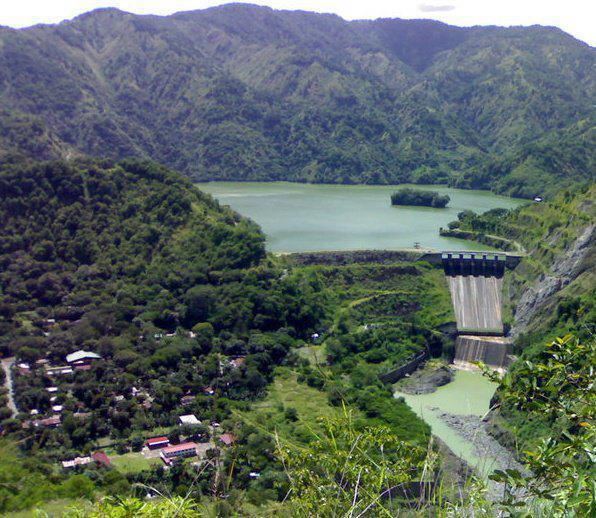Construction began August 1956 Impounds Agno River Opened May 1960 Max depth 193 m | Opening date May 1960 Height 107 m Length 215 m | |
 | ||
Official name Binga Hydroelectric Power Plant Type of dam Storage, Earth and Rock fill Construction cost 18.5 million USD (at current price) Similar Ambuklao Dam, Magat Dam, Pantabangan Dam, Angat Dam, Ipo Dam | ||
Binga dam clearer view
Binga Dam is a dam in Agno River connected to a hydroelectric power plant situated at Barrio Binga, Barangay Tinongdan in the municipality of Itogon in Benguet province of the Philippines.
Contents
- Binga dam clearer view
- Map of Binga Dam Itogon Benguet Philippines
- Binga dam closeup view
- Binga Hydro
- References
Map of Binga Dam, Itogon, Benguet, Philippines
The dam was constructed in August 1956 and opened in May 1960, three years after its sister facility Ambuklao Dam. It is located 31 kilometres (19 mi) southeast of Baguio City and 19 kilometres (12 mi) downstream of Ambuklao Dam. Improvement of the dam is ongoing for it had received heavy damage during the 1990 Luzon earthquake, and its installed capacity of 100 MW is being upgraded to 140MW.
The Binga facility was constructed in 1956 for power generation and flood control. The dam and other non-power components are owned by the government through the National Power Corporation.
Binga dam closeup view
Binga Hydro
On November 28, 2007, SNAP-Benguet won the public bid for Binga hydro and its neighboring power facility Ambuklao, which were sold as a package under the power sector privatization program of the Philippine government. It took over operations on July 10, 2008. Only the power components were privatized while the dams remain government-owned.
SNAP-Benguet is a joint venture between SN Power of Norway and AboitizPower.
In 2010, Binga underwent refurbishment to increase its capacity from 100 MW to up to 125 MW. The project was completed in July 2013. In 2014, Binga underwent uprating work and increased its capacity to 140 MW.
Binga hydro operates as a peaking plant and is also capable of providing ancillary services needed to stabilize the grid.
